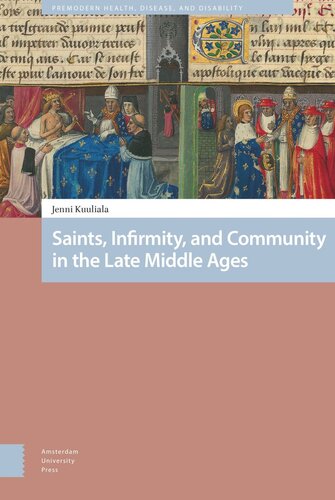

Most ebook files are in PDF format, so you can easily read them using various software such as Foxit Reader or directly on the Google Chrome browser.
Some ebook files are released by publishers in other formats such as .awz, .mobi, .epub, .fb2, etc. You may need to install specific software to read these formats on mobile/PC, such as Calibre.
Please read the tutorial at this link: https://ebookbell.com/faq
We offer FREE conversion to the popular formats you request; however, this may take some time. Therefore, right after payment, please email us, and we will try to provide the service as quickly as possible.
For some exceptional file formats or broken links (if any), please refrain from opening any disputes. Instead, email us first, and we will try to assist within a maximum of 6 hours.
EbookBell Team

5.0
60 reviewsBodily suffering and patient, Christlike attitudes towards that suffering were among the key characteristics of sainthood throughout the medieval period. Drawing on new work in medieval dis/ability studies, this book analyses the meanings given to putative saints' bodily infirmities in late medieval canonization hearings. How was an individual saint's bodily ailment investigated in the inquests, and how did the witnesses (re)construct the saintly candidates' ailments? What meanings were given to infirmity when providing proofs for holiness? This study depicts holy infirmity as an aspect of sanctity that is largely defined within the community, in continual dialogue with devotees, people suffering from doubt, the holy person, and the cultural patterns ascribed to saintly life. Furthermore, it analyses how the meanings given to saints' infirmities influenced and reflected society's attitudes towards bodily ailments in general.